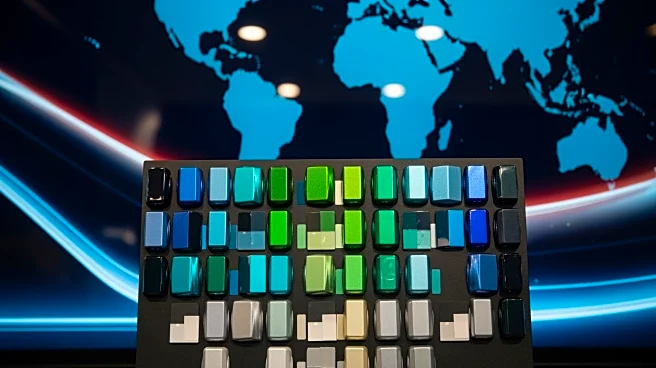What's Happening?
BASF Coatings has introduced its 2025-2026 Automotive Color Trends collection, titled 'DRIVING THE PROXY.' This collection emphasizes sustainability and innovation, featuring colors made from renewable
or recycled materials and incorporating advanced pigments for visual sophistication. The collection includes 45 colors, with key regional colors such as Tesseract Blue in EMEA, Phygital Magnetar in Asia Pacific, and Auxetic Neutral in the Americas. These colors reflect cultural and technological shifts, offering automotive OEMs insights for future model development. BASF Coatings' expertise in digital and virtual color tools supports these design decisions.
Why It's Important?
The unveiling of BASF Coatings' new color trends collection is significant for the automotive industry, as it provides manufacturers with innovative design options that align with global cultural and technological shifts. The focus on sustainability and advanced pigment technology reflects a growing demand for environmentally friendly and visually appealing automotive designs. This collection could influence the aesthetic direction of future vehicle models, impacting consumer preferences and potentially driving sales. The regional focus highlights the importance of cultural nuances in design, offering tailored solutions for diverse markets.
What's Next?
Automotive OEMs are expected to integrate these color trends into their design processes, potentially leading to the appearance of these colors on vehicles within the next two years. The industry may see increased collaboration between color designers and manufacturers to explore new materials and technologies that enhance vehicle aesthetics while meeting sustainability goals. As these trends gain traction, there could be a shift towards more personalized and culturally resonant vehicle designs, influencing market dynamics and consumer choices.
Beyond the Headlines
The introduction of BASF Coatings' color trends collection may have broader implications for the automotive industry, including ethical considerations around sustainability and the use of recycled materials. The emphasis on cultural and technological influences in design could lead to a more inclusive approach to automotive aesthetics, fostering diversity and innovation. This development might also encourage other industries to adopt similar practices, promoting a holistic view of design that integrates environmental and cultural factors.











